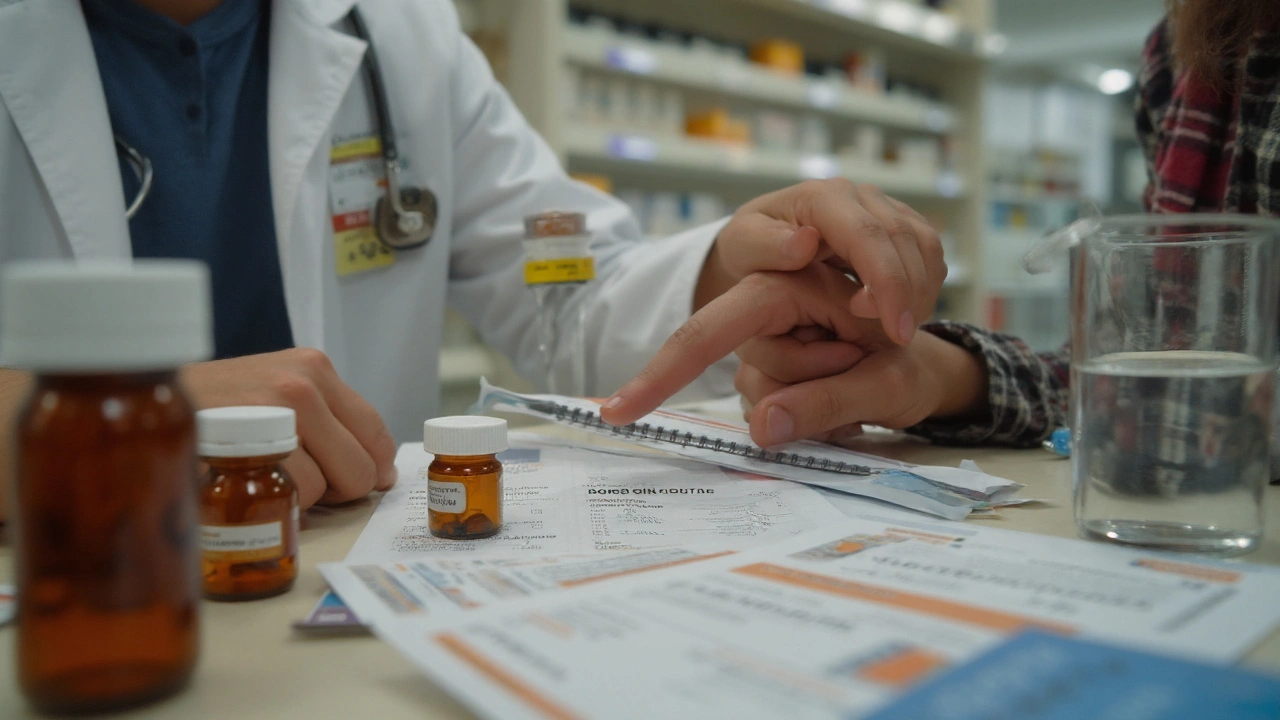Dosage Basics – Find the Right Amount for Your Meds and Supplements
If you’ve ever wondered whether to take two pills or one, you’re not alone. The right dose can make a medicine work, keep side effects low, and protect your health. Getting it wrong can mean the drug doesn’t help, or it could cause trouble. Below you’ll find a simple way to decide what amount is right for you.
How to Figure Out the Correct Dose
First, look at the label or prescription. It tells you the standard range – for example, Aciphex (rabeprazole) is usually 20 mg once daily for heartburn, but doctors may lower it for older patients. Second, consider your personal factors. Weight, age, kidney function, and other meds all shift the sweet spot. A 70‑kg adult might need 0.5 mg of lorazepam (Ativan), while a lighter teen may only need 0.25 mg.
Third, start low and go slow. When you try a new supplement like noni juice, begin with the lowest suggested dose and see how you feel. If you tolerate it, you can bump it up within the recommended range. This approach works for everything from tannic acid supplements to selenium for thyroid health.
Fourth, check for interactions. Some drugs, like cyclobenzaprine, can stack up with other muscle relaxants, raising the risk of drowsiness. Use a reliable drug interaction checker or ask a pharmacist before mixing, especially if you’re already on prescription meds.
Common Dosing Mistakes to Avoid
Skipping the dose‑adjustment step is a big error. People often copy the adult dose for kids or ignore kidney issues in older adults. Another trap is buying a generic online without confirming the strength. A cheap lorazepam tablet might be 0.5 mg or 1 mg – double‑checking the label saves you from accidental over‑dose.
Don’t ignore the timing instructions either. Some meds, like famciclovir (Famvir), work best when taken with food, while others, such as certain PPIs, need an empty stomach. Following the timing rule finishes the therapy faster and cuts side effects.
Finally, keep track of any side effects. If you start feeling unusually sleepy, dizzy, or develop a rash after increasing a dose, stop and call your healthcare provider. Adjusting the amount is often the fix, but sometimes you need a different drug.
Bottom line: the right dosage is personal, not a one‑size‑fits‑all number. Use the label, factor in your health details, start low, watch for interactions, and stay alert for side effects. By doing these steps, you’ll get the most benefit from any medication or supplement while keeping safety front and center.

Requip (Ropinirole) Guide: Uses, Dosage, Side Effects & FAQs
Discover what Requip (ropinirole) does, how to take it, common side effects, safety warnings, and practical tips for managing Parkinson's or restless‑leg syndrome.
Sep 21 2025
![Sartel (Telmisartan) Uses, Dosage, Side Effects, Interactions [2025 Guide]](/uploads/2025/08/sartel-telmisartan-uses-dosage-side-effects-interactions-2025-guide.webp)
Sartel (Telmisartan) Uses, Dosage, Side Effects, Interactions [2025 Guide]
Clear, current guide to Sartel (telmisartan): uses, safe dosage, side effects, interactions, and comparisons to other ARBs-practical tips you can act on today.
Aug 30 2025

Bupron SR (Bupropion SR) Guide: Uses, Dosage, Side Effects, Interactions, FAQs
Clear, evidence-based guide to Bupron SR (bupropion SR): what it treats, how to take it, side effects, interactions, safety checks, and FAQs.
Aug 30 2025

Levothroid (Levothyroxine): Uses, Dosage, Side Effects, and 2025 Availability
Clear, 2025-ready guide to Levothroid: what it is, why it’s hard to find, how levothyroxine works, safe dosing, side effects, switching brands, and NZ-specific tips.
Aug 22 2025

Nitroglycerin (Glyceryl Trinitrate) Guide: Uses, Dosage, Side Effects, and Safety in NZ
Plain-English guide to nitroglycerin/GTN: what it is, how to use it for chest pain, dosing, side effects, interactions, and NZ-specific tips you can act on today.
Aug 21 2025

Star Anise Supplements for Immunity & Inflammation: Benefits, Dosage, and Safety (2025 Guide)
Do star anise supplements really help immunity and inflammation? Get evidence, safe dosage, forms, side effects, and buying tips-clear, science-backed, 2025.
Aug 13 2025




